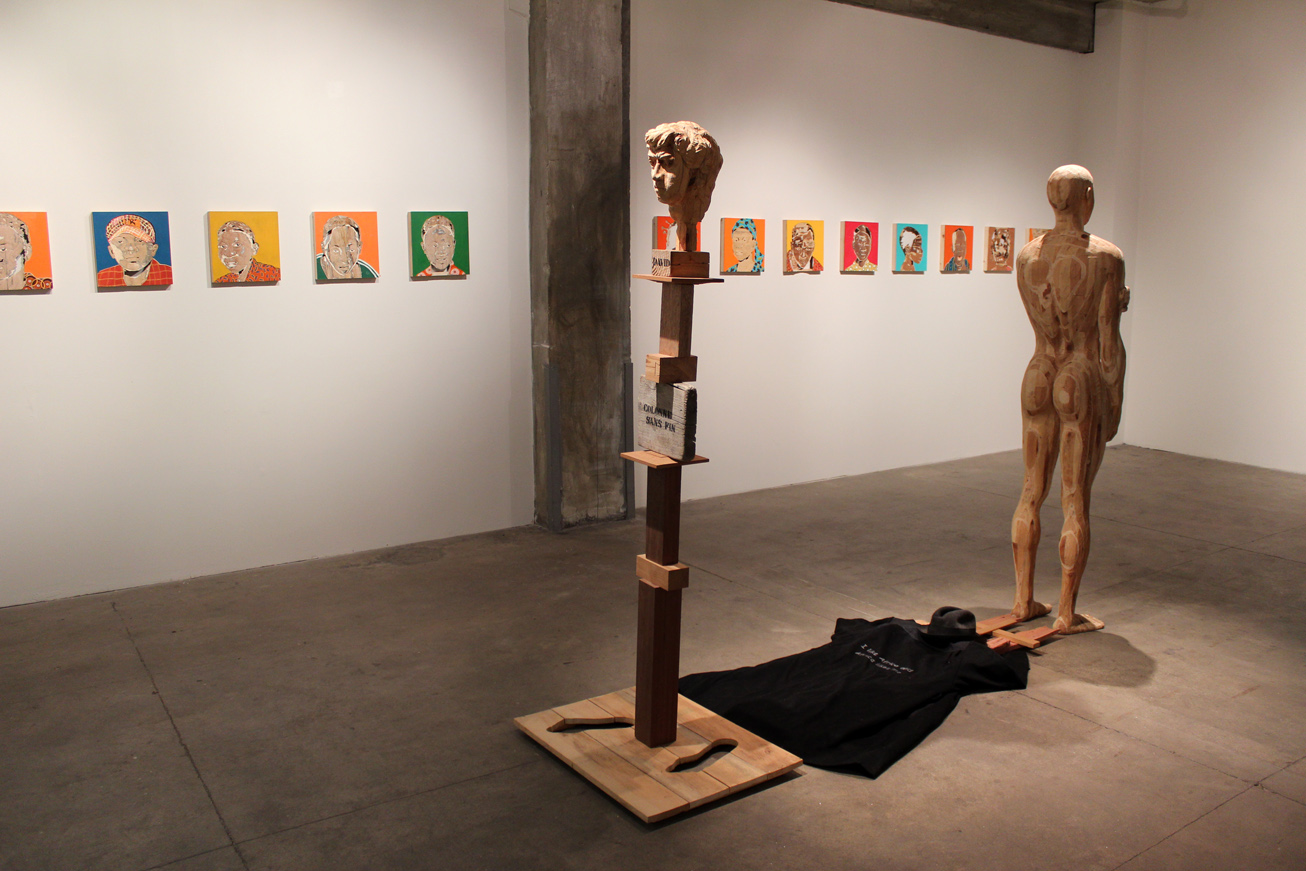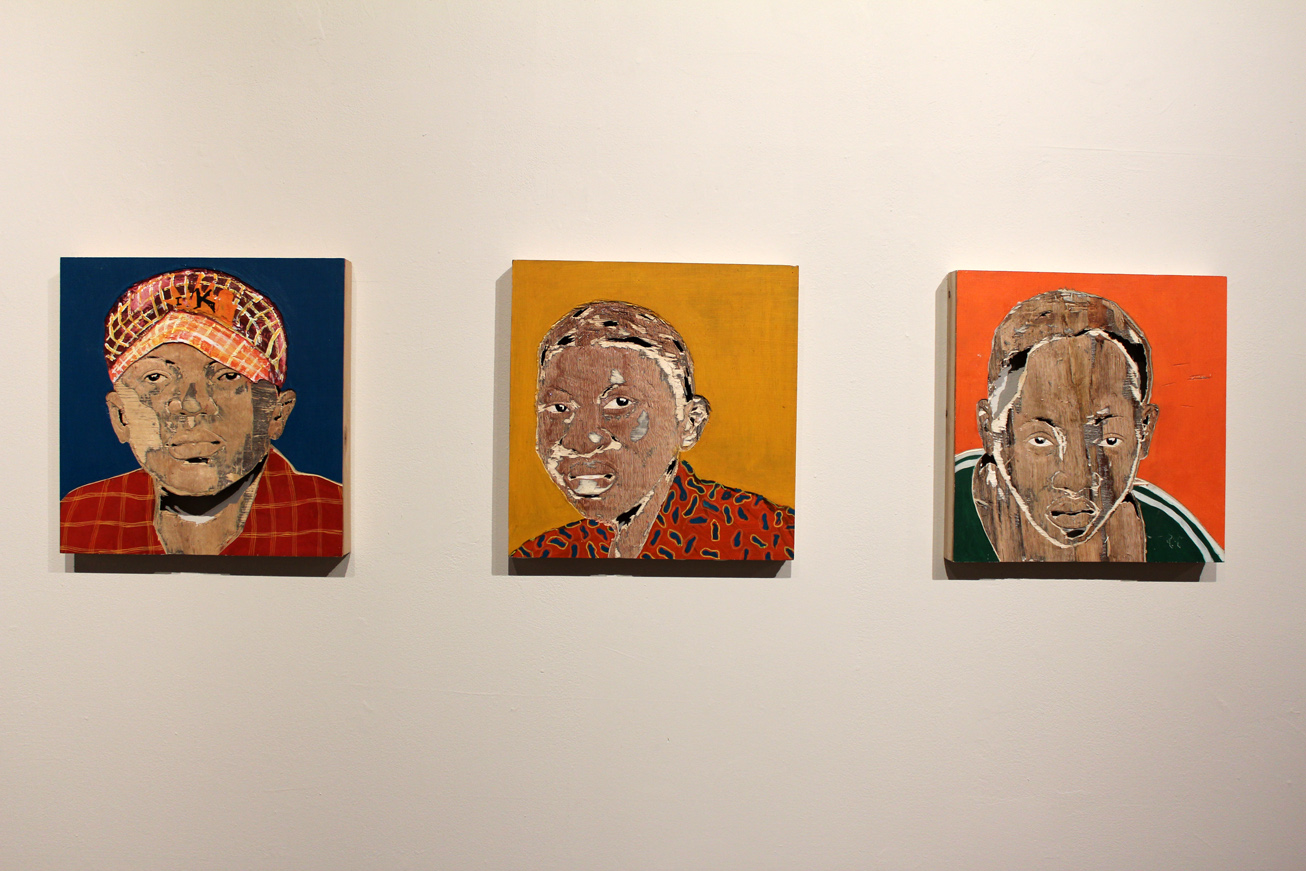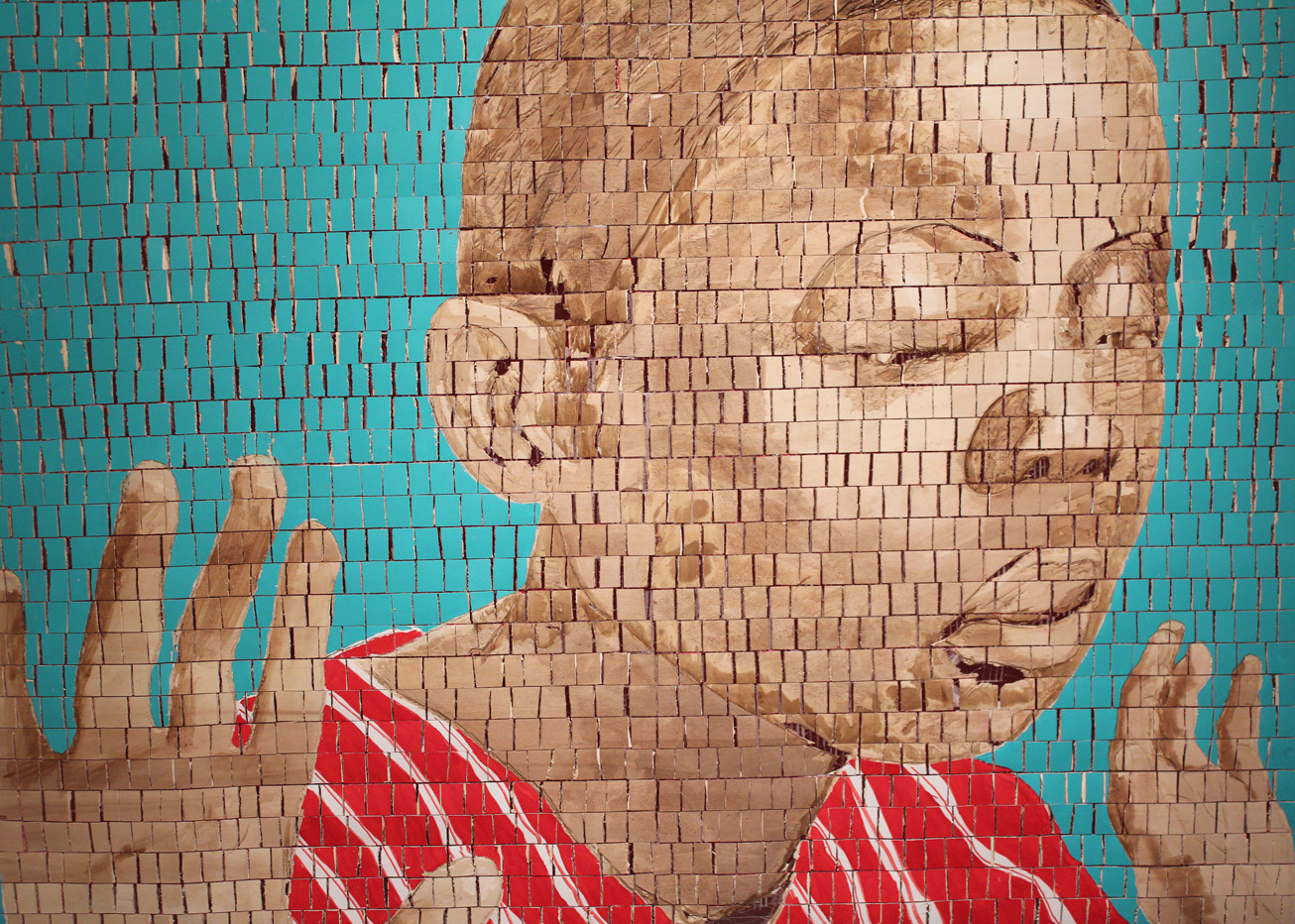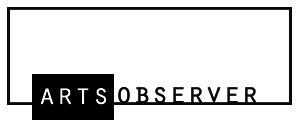NEW YORK—Skoto Gallery promotes primarily the work of a talented group of accomplished and emerging contemporary African artists. Its current exhibition, featuring works by Congolese artist Aimé Mpané, is both somber and hopeful, but most importantly, thought-provoking.
The show’s title, “Rape/Le Viol,” is a literal and metaphoric reference to the violence and atrocities suffered by the people of the Congo over the last century. The gallery describes Mpané’s work as exploring themes of “power and vulnerability” and the legacy of colonialism in his homeland:
“For more than a century, the Democratic Republic of the Congo has been plagued by regional conflict and a deadly scramble for its vast natural resources. In fact, greed for Congo’s natural resources has been a principal driver of atrocities and conflict throughout Congo’s tortured history. In eastern Congo today, these mineral resources are financing multiple armed groups, many of whom use mass rape as a deliberate strategy to intimidate and control local populations, thereby securing control of mines, trading routes, and other strategic areas.”

Detail of “IC.Cont.,” 2012 (mixed media on wood panel).
Despite the gravity of his subject, Mpané’s work symbolizes a sense of hope for Congolese young people, largely through his use of color. His carved portraits—meticulously achieved through subtracting layers of wood—could be viewed as capturing a generation of lost youth, but instead evoke their promise and potential.
Born into a family of master artists, Mpané holds degrees from the Academie des Beaux-Arts in Kinshasa and the Ecole National Superieure des Art Visuels de La Cambre in Brussels, Belgium. He divides his time between Kinshasa and Brussels.
“Rape/Le Viol” is on view through this weekend, Feb. 28 to April 13, 2013. Last week, gallery owner Skoto Aghahowa gave Arts Observer a tour of the exhibit. A selection of the works on view follows.
All photos © Arts Observer

Installation view of “Couple Infernal (The Infernal couple),” 2004 (mixed media).
The black coat at the center of the installation reads: “I Like Africa and Africa Likes Me.”
The gallery describes the installation thus: “Firmly rooted in a conceptual framework that draws on art historical references as well as a deep understanding of the aesthetic and cultural character of the African continent, it projects a rough beauty that makes poignant statement on the pillaging and rape of the African continent’s cultural heritage which gained full force during the period of the colonial project that began in the late 19th century and continues.”

Trio of portraits from “Kinoc” series, 2011-2012 (all mixed media on wood panel).

Detail of “Looking the Other Way,” 2013 (mixed media on wood).
To create “Looking the Other Way,” Mpané painted the large-scale image on a sheet of wood, cut the work into horizontal slats, attached the strips to a mesh backing and then randomly broke each of the slats into a series of squares, creating the tile effect of the work.

Detail of “IC.Cont.,” 2012 (mixed media on wood panel).

Detail of “Couple Infernal (The Infernal couple),” with portraits of youth in background.

as artist I would like to receive information. thaks